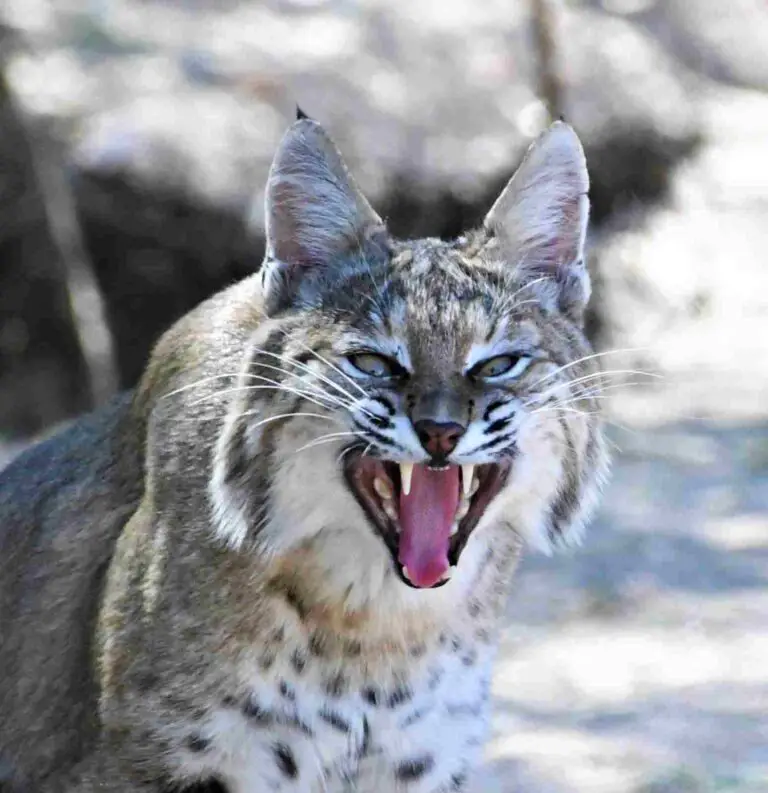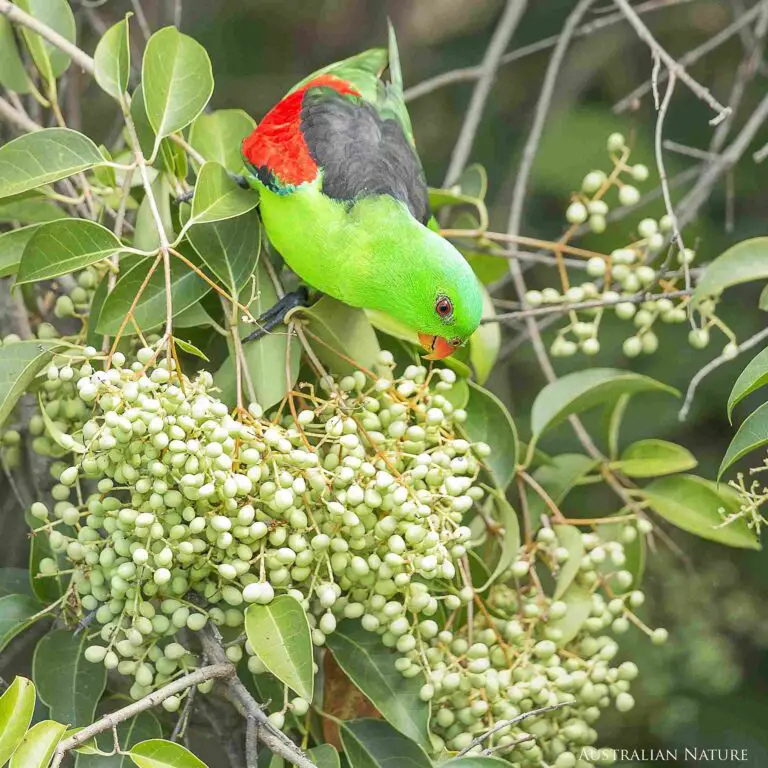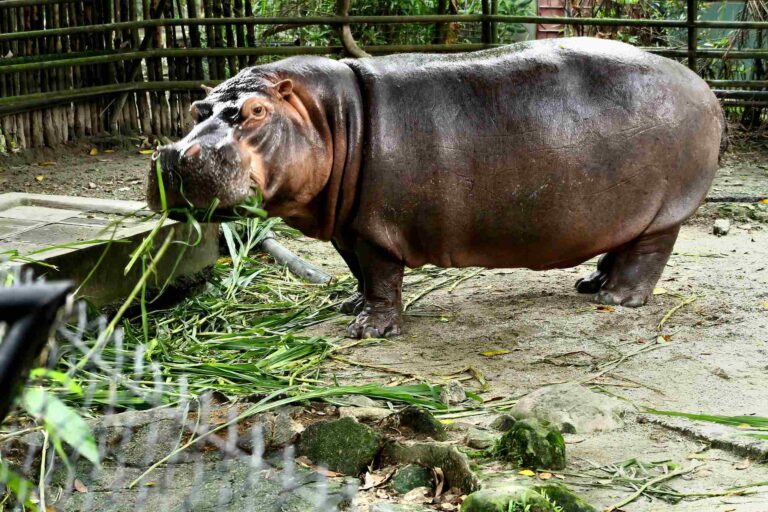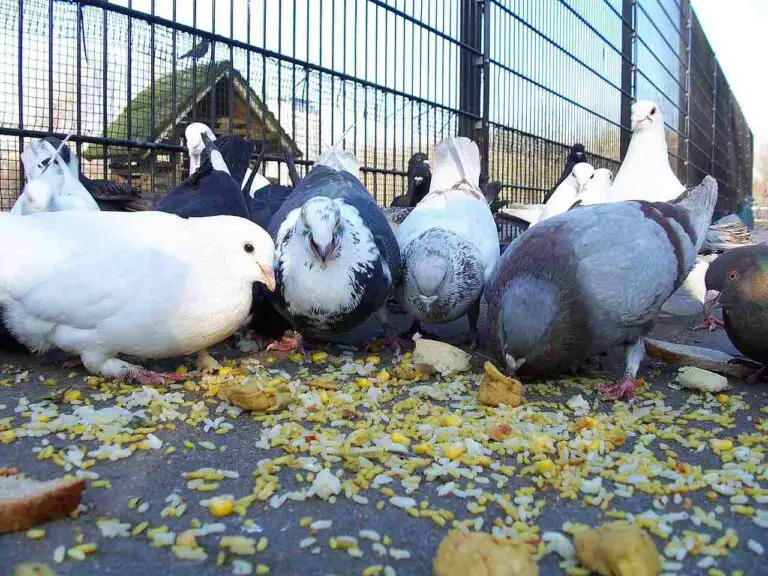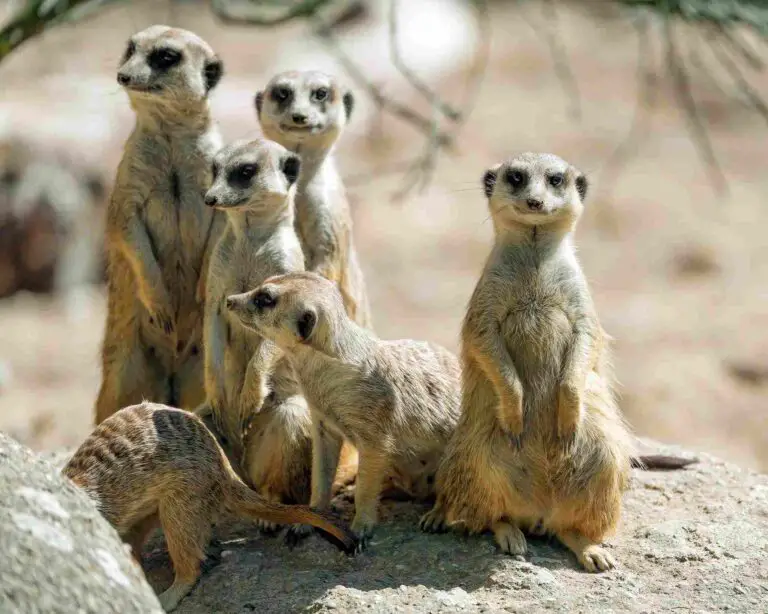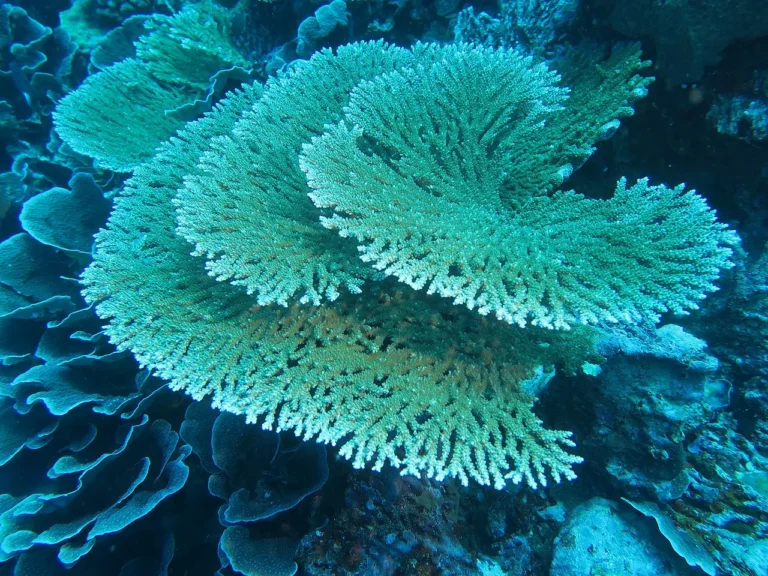What Type of Consumer is a Frog? Unraveling Amphibian Diet and Consumer Role(s)
Frogs are secondary consumers in the ecosystem, which contribute to energy transfer, that in turn supports the stability and continuity of the food chain. They feed on primary consumers such as carnivorous ants and detritivores like worms. By understanding the diet and consumer role of frogs, we can gain insights into their ecological significance and the factors that determine their consumer level.
Overview of the Feeding Behavior(s) of Frogs
In their natural habitats, frogs have a diverse diet that includes a wide range of organisms. They consume ants, beetles, worms, and even other amphibians and reptiles.
- Larger species like bullfrogs have been observed to consume small mammals, highlighting their position as secondary consumers. This ability to prey on a variety of organisms allows frogs to exert top-down control on the population dynamics of their prey species.
- Interestingly, frogs also exhibit dietary variations throughout their life stages. During their larval stage, many frog species are herbivorous and consume plant material such as algae and aquatic plants.
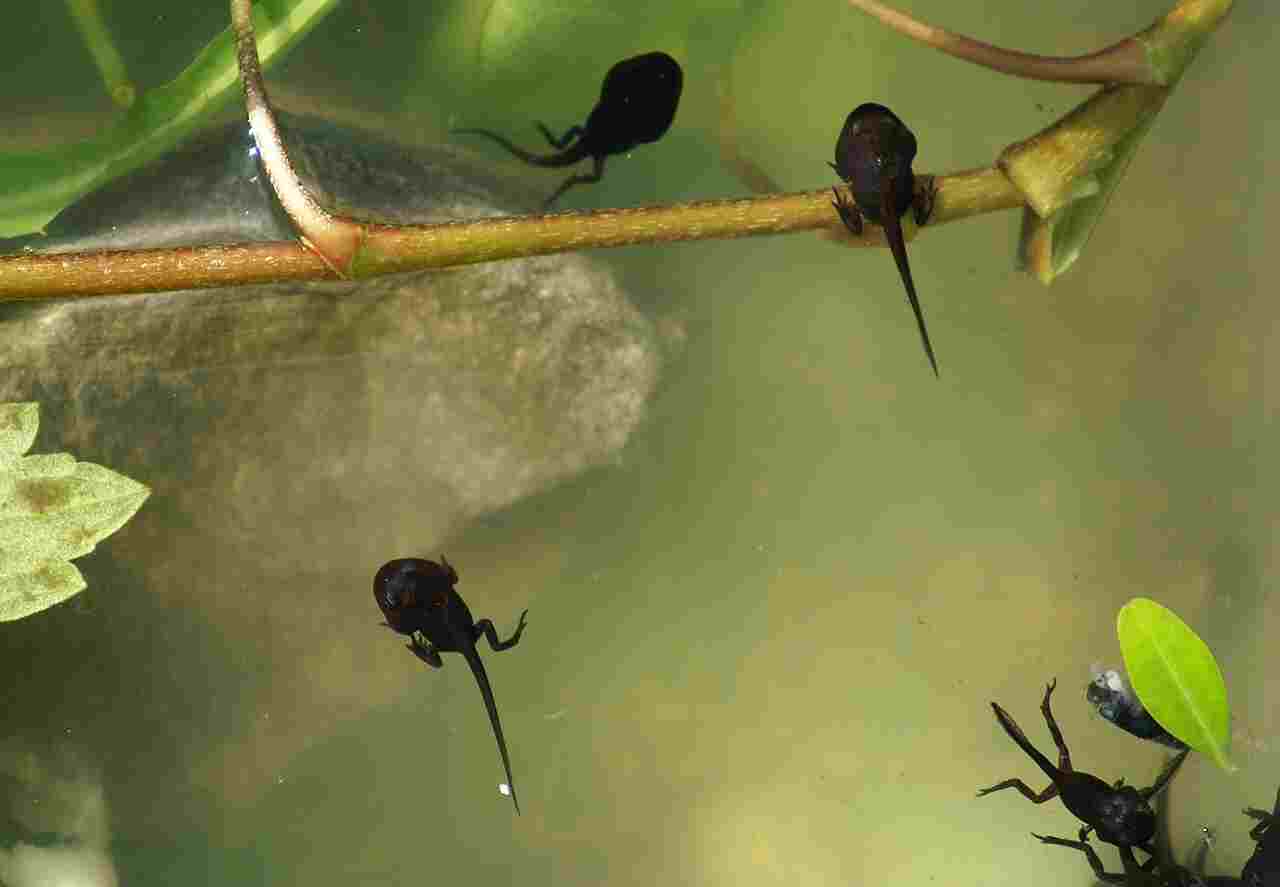
- This herbivorous behavior continues in some adult frog species, which consume plant material as part of their diet. This dual role as both herbivores and carnivores further emphasizes the versatility of frogs as secondary consumers.
- The consumer level of frogs is influenced by various factors, including their size, habitat, and availability of prey. Larger frog species tend to occupy higher consumer levels due to their ability to consume larger prey.
- Additionally, frogs that inhabit diverse ecosystems with abundant prey resources are more likely to occupy higher consumer levels. This highlights the importance of the environment in shaping the consumer role of frogs and their impact on the food chain.
- Understanding the consumer level of frogs is not only important for ecological research but also for understanding the broader implications of their role in the ecosystem.
- Frogs as secondary consumers contribute to the regulation of prey populations, which in turn affects the overall structure and dynamics of the ecosystem. By controlling the abundance of primary consumers, frogs help maintain the balance between different trophic levels and ensure the stability of the ecosystem.
- Generally, frogs are an integral part of the food chain as secondary consumers. Their diet, which includes primary consumers like carnivorous ants and detritivores like worms, highlights their role in regulating prey populations.
- Factors such as size, habitat, and prey availability determine the consumer level of frogs. By understanding the consumer role of frogs, we can gain valuable insights into the functioning of ecosystems and the intricate relationships between different organisms.
What Frogs Eat in Their Natural Habitats
Frogs have a diverse diet that includes a wide range of organisms in their natural habitats. They are known to consume ants, beetles, worms, other amphibians, reptiles, small mammals, and even plant material. This varied diet highlights the versatility of frogs as consumers and their ability to occupy different trophic levels in the food chain.
- One interesting observation is that larger frog species, such as bullfrogs, have been observed to consume small mammals. This highlights their position as secondary consumers and their ability to prey on larger organisms.
- By consuming small mammals, frogs exert top-down control on the population dynamics of their prey species, contributing to the regulation of prey populations in their ecosystems.
- In addition to their carnivorous diet, frogs also exhibit dietary variations throughout their life stages. During their larval stage, many frog species are herbivorous and consume plant material such as algae and aquatic plants.
- This herbivorous behavior continues in some adult frog species, which consume plant material as part of their diet. This dual role as both herbivores and carnivores further emphasizes the versatility of frogs as consumers.
- The ability of frogs to consume plant material is particularly important in their larval stage. As herbivores, they play a role in the nutrient cycling of their ecosystems by consuming and breaking down plant material. This contributes to the overall functioning and productivity of their habitats.
- It is worth noting that the consumption of plant material by frogs is not limited to their larval stage. Some adult frog species also incorporate plant material and algae into their diet. This can include consuming leaves or other plant parts, as well as algal biomass.
- The inclusion of plant material in their diet further highlights the adaptability of frogs as consumers and their ability to utilize different food resources.
- The consumption of plant and algal material by frogs has implications for the broader ecosystem. By consuming such autotrophic materials, frogs can indirectly affect the abundance and distribution of plant species in their habitats. This can have cascading effects on other organisms that rely on these plants for food or habitat.
- Frogs have a diverse diet that includes a variety of organisms in their natural habitats. They consume ants, beetles, worms, other amphibians, reptiles, small mammals, and even plant material.
- This versatility as consumers allows frogs to occupy different trophic levels in the food chain and exert top-down control on prey populations. The ability of frogs to consume plant material, both in their larval stage and as adults, further emphasizes their adaptability and ecological significance as consumers in their ecosystems.
-
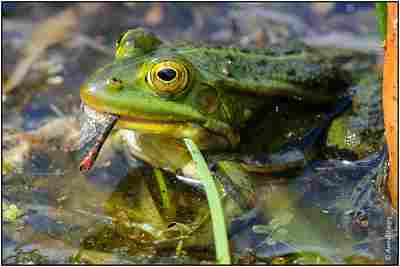
Frogs are Opportunistic Consumers and Can Feed on a Variety of Organisms (Credit: Arend 2013 .CC BY 2.0.)
Frogs as Primary Consumers
Frogs can be classified as primary consumers not only in their tadpole stage but also as adults when they have a significant concentration of plant or algal supplements in their diet. This classification as primary consumers highlights the important role that frogs play in their ecosystems as herbivores.
During their tadpole stage, many frog species primarily feed on plant material such as algae and aquatic plants.
This herbivorous behavior allows them to obtain the necessary nutrients for growth and development. By consuming plant material, tadpoles contribute to the nutrient cycling in their habitats, helping to maintain the balance of the ecosystem.
Even as adults, some frog species continue to incorporate plant material and algae into their diet, either as an opportunistic survival strategy, or accidentally .
This can include consuming leaves, or other plant parts, as well as algal biomass. By consuming these autotrophic materials, frogs contribute to the energy flow and nutrient cycling within their ecosystems.
The ability of frogs to function as primary consumers is significant in terms of their impact on the abundance and distribution of plant species in their habitats. By consuming plant material, frogs can indirectly affect the growth and survival of plants, which in turn can have cascading effects on other organisms that rely on these plants for food or habitat.
Frogs, as primary consumers, play a crucial role in maintaining the balance of their ecosystems. Their herbivorous behavior and consumption of plant material contribute to the nutrient cycling and energy flow within their habitats.
By consuming plant material, frogs help to regulate the abundance and distribution of plant species, which has implications for the overall functioning and productivity of their ecosystems.
In addition to their role as primary consumers, frogs also occupy other trophic levels in the food chain depending on their diet and the availability of prey. This versatility as consumers allows frogs to adapt to different ecological niches and contribute to the overall stability and functioning of their ecosystems.
Overall, the classification of frogs as primary consumers emphasizes their ecological significance and the important role they play in their habitats.
Whether as tadpoles or adults, frogs contribute to the nutrient cycling, energy flow, and regulation of plant populations in their ecosystems. Understanding the consumer role of frogs is essential for comprehending the complex dynamics of food webs and the interactions between organisms in natural environments.
Frogs can be classified as primary consumers in both their tadpole stage and as adults with a significant concentration of plant or algal matter in their diet.
Their herbivorous/omnivorous behavior contributes to the nutrient cycling and energy flow within their ecosystems, highlighting their ecological significance as consumers. By consuming plant material, frogs indirectly affect the abundance and distribution of plant species, which has cascading effects on other organisms in their habitats.
The classification of frogs as primary consumers underscores their important role in maintaining the balance and functioning of their ecosystems.
Frogs as Tertiary Consumers
Some species of frogs, such as bullfrogs, can function as tertiary consumers depending on their specific habitat and the other species present.
Tertiary consumers are organisms that feed on secondary consumers, which in turn feed on primary consumers. This means that frogs in this role consume other animals that are themselves consumers of other animals or plants.
The ability of certain frog species to occupy the tertiary consumer level highlights their adaptability and versatility as consumers.
They have the capacity to consume a wide range of prey, including insects, small fish, and even other amphibians. This makes them important predators within their food webs, exerting top-down control on the populations of their prey.
The classification of frogs as tertiary consumers is influenced by various factors, including the species composition of their habitat and the availability of suitable prey.
In ecosystems with a diverse range of prey species, frogs may have access to a variety of food sources, allowing them to occupy higher trophic levels. For example, in a wetland ecosystem, frogs may feed on insects such as dragonflies and damselflies, as well as small fish like minnows or tadpoles of other amphibians.
The presence of frogs as tertiary consumers can have significant implications for the overall structure and dynamics of their ecosystems. By regulating the populations of their prey, frogs can indirectly influence the abundance and distribution of other organisms within the food web. This can have cascading effects on the entire ecosystem, impacting factors such as species diversity and energy flow.
For instance, if the population of a particular prey species increases, frogs as tertiary consumers can help control their numbers, preventing overpopulation and potential negative impacts on other species.
On the other hand, if the population of a prey species declines, frogs may need to switch to alternative food sources or even move to different habitats in search of suitable prey. These dynamics highlight the interconnectedness of species within ecosystems and the role that frogs play in maintaining balance.
Understanding the consumer role of frogs, including their potential as tertiary consumers, is crucial for comprehending the complex interactions and dynamics within natural environments. By studying the feeding behaviors and ecological roles of frogs, scientists can gain insights into the functioning and stability of ecosystems, ultimately contributing to conservation efforts and the preservation of biodiversity.
Generally, frogs can occupy different trophic levels in the food chain depending on their diet and the availability of prey. While they are primarily classified as primary consumers, some species of frogs can also function as tertiary consumers.
Their adaptability and versatility as consumers allow them to consume a wide range of prey, making them important predators within their ecosystems. The presence of frogs as tertiary consumers has significant implications for the structure and dynamics of their habitats, as they regulate the populations of their prey and indirectly influence other organisms within the food web.
Understanding the consumer role of frogs is essential for comprehending the complex dynamics of food webs and the interactions between organisms in natural environments. By studying the feeding behaviors and ecological roles of frogs, scientists can contribute to the conservation and preservation of biodiversity.
Factors that Determine the Consumer Level of Frogs
The consumer level of frogs, whether they are primary, secondary, or even tertiary consumers, is influenced by several key factors. These factors include the species composition of their habitat, the relative size of the frogs, and their feeding behaviors. By understanding these factors, we can gain insights into the consumer classification of frogs and their role within the food chain.
- The first factor that plays a significant role in determining the consumer level of frogs is the species composition of their habitat. Different frog species have varying dietary preferences and feeding behaviors, which can influence their position in the food chain.
- For example, some frog species primarily feed on insects, while others may consume small fish, crustaceans, or even other amphibians. The availability of these different prey items in their habitat can determine whether frogs are classified as primary, secondary, or tertiary consumers.
- In habitats where frogs primarily feed on plant material, such as algae or aquatic plants, they are typically classified as primary consumers. These frogs play a crucial role in transferring energy from plants to higher trophic levels within the food chain. They consume plant material and convert it into energy, which is then passed on to secondary consumers that feed on them.
- On the other hand, if frogs predominantly feed on other animals, such as insects or small fish, they are classified as secondary consumers. These frogs occupy a higher trophic level in the food chain, as they consume primary consumers and obtain energy from them. Their feeding behaviors and dietary preferences make them important predators within their ecosystems.
- In some cases, certain frog species can even function as tertiary consumers. This occurs when they consume other animals that are themselves consumers of other animals or plants. Tertiary consumers occupy the highest trophic level in the food chain and play a crucial role in regulating the populations of their prey.
- The second factor that influences the consumer level of frogs is their relative size. Larger frogs generally have a wider range of prey options available to them, which can allow them to occupy higher trophic levels.
- Their size provides them with the ability to consume larger prey items, such as small fish or even other amphibians. This versatility in their diet enables them to function as secondary or even tertiary consumers in their respective habitats.
- Conversely, smaller frogs may have more limited dietary options and primarily feed on smaller prey items, such as insects or small invertebrates. These frogs are more likely to be classified as primary consumers, as they primarily consume plant material or feed on smaller organisms within their environment.
- The third factor that determines the consumer level of frogs is their feeding behaviors. Some frog species are generalists and have a broad diet, consuming a variety of prey items.
- These frogs have the ability to adapt to different food sources and occupy different trophic levels within the food chain. Their versatility as consumers allows them to function as primary, secondary, or even tertiary consumers depending on the availability of prey in their habitat.
- On the other hand, some frog species are specialists and have specific dietary preferences. They may feed exclusively on certain types of prey, such as specific insects or small fish. These frogs are more likely to be classified as secondary consumers, as they primarily consume other animals within their environment.
- The consumer level of frogs is determined by several factors, including the species composition of their habitat, their relative size, and their feeding behaviors. The availability of different prey items in their environment influences whether frogs are classified as primary, secondary, or tertiary consumers.
- Additionally, the size of the frogs and their feeding behaviors play a role in determining their position within the food chain. By understanding these factors, we can gain a better understanding of the consumer classification of frogs and their role within their ecosystems.
What type of Consumers are the Frog and the Snake?
The frog and the snake play different roles in the food chain hierarchy, with the frog typically being below the snake. The frog is commonly classified as a primary or secondary consumer, while the snake is often a tertiary consumer in its immediate environment.
However, the specific variables of size and species composition of the ecosystem will ultimately determine the consumer level of both the frog and the snake.
The consumer level of the frog is influenced by factors such as its relative size and feeding behaviors. Smaller frogs are more likely to be primary consumers, primarily consuming plant material or smaller organisms within their environment.
These frogs play a crucial role in transferring energy from plants to higher trophic levels within the food chain. They consume plant material and convert it into energy, which is then passed on to secondary consumers that feed on them. Their small size limits their ability to consume larger prey items, such as small fish or other amphibians, which contributes to their role as primary consumers.
On the other hand, larger frogs have a wider range of prey options available to them, allowing them to occupy higher trophic levels as secondary consumers. Their size provides them with the ability to consume larger prey items, such as small fish or even other amphibians.
This versatility in their diet enables them to function as secondary consumers in their respective habitats. By consuming primary consumers, they obtain energy from them and occupy a higher trophic level in the food chain.
Similarly, the snake’s consumer level is determined by its size and feeding habits. Larger snakes have the ability to consume larger prey, which can place them at a higher trophic level as tertiary consumers.
These snakes are skilled predators that can consume a variety of prey, including small mammals, birds, and other reptiles. Their ability to consume a wide range of prey items allows them to occupy different trophic levels within the food chain. This versatility in their diet enables them to function as tertiary consumers in their respective habitats.
While the frog is typically a primary or secondary consumer and the snake is often a tertiary consumer, the specific variables of size and species composition of the ecosystem play a significant role in determining their consumer levels.
In some cases, certain frog species can even function as tertiary consumers if they consume other animals that are themselves consumers of other animals or plants. This occurs when they consume other animals that occupy a higher trophic level in the food chain. Similarly, snakes can occupy different trophic levels depending on the availability of prey in their habitat.
The consumer level of both the frog and the snake is not fixed and can vary depending on the specific conditions of their environment. The availability of different prey items in their habitat, their relative size, and their feeding behaviors all contribute to their consumer classification.
These factors ultimately shape the roles that frogs and snakes play within their respective environments.
The frog is typically classified as a primary or secondary consumer, while the snake is often a tertiary consumer. The consumer level of both the frog and the snake is influenced by factors such as their relative size, species composition of their habitat, and their feeding behaviors. Smaller frogs are more likely to be primary consumers, while larger frogs can occupy higher trophic levels as secondary consumers.
Similarly, larger snakes have the ability to consume larger prey, allowing them to function as tertiary consumers. However, the specific variables of size and species composition of the ecosystem play a significant role in determining their consumer levels. By understanding these factors, we can gain insights into the consumer classification of frogs and snakes and their roles within the food chain.
What Type of Consumer is A Green Frog?
Green Frogs (Lithobates clamitans) are fascinating creatures that inhabit various aquatic environments across North America. When it comes to their feeding habits, green frogs are known to be opportunistic feeders, consuming a wide range of prey items.
They exhibit a diverse diet, consuming virtually any available prey that is small enough to swallow. This includes insects, spiders, crayfish, small fish, newts, tadpoles, small frogs, snails, and even small snakes.
As opportunistic feeders, green frogs take advantage of the abundance of food sources in their environment. Insects, such as flies, mosquitoes, and beetles, are commonly consumed by green frogs. They use their long, sticky tongues to capture these small, flying insects with impressive accuracy. Spiders, which are also abundant in their habitats, are another prey item that green frogs readily consume.
In addition to insects and spiders, green frogs have been observed feeding on crayfish. These small crustaceans are often found in freshwater habitats, and their abundance makes them an attractive food source for green frogs. With their strong jaws and sharp teeth, green frogs are able to capture and consume crayfish, providing them with a source of protein and nutrients.
Small fish, including minnows, are also part of the green frog’s diet. These fish are often found in the same aquatic habitats as green frogs, and their small size makes them an easy target for these amphibians. Green frogs are skilled hunters in the water, using their powerful hind legs to propel themselves towards their prey and snatch them with their mouths.
Interestingly, green frogs are not limited to consuming aquatic prey. They have been observed feeding on newts, tadpoles, and even small frogs.
This cannibalistic behavior is more common in larger green frogs, which have the ability to consume smaller individuals of their own species. This opportunistic feeding behavior allows green frogs to take advantage of available food sources, even if it means consuming members of their own kind.
Snails are another prey item that green frogs consume. These slow-moving creatures are often found in moist environments, making them an easy target for green frogs. With their sticky tongues, green frogs are able to capture and consume snails, extracting the soft body parts from their shells.
In some cases, green frogs have been observed consuming small snakes. While this behavior is less common, it highlights the opportunistic nature of green frogs when it comes to feeding. Small snakes that are within the size range that green frogs can swallow may become part of their diet, further expanding their range of prey items.
Green frogs can be summarily described as opportunistic feeders that consume a wide variety of prey items. Their diet includes insects, spiders, crayfish, small fish, newts, tadpoles, small frogs, snails, and even small snakes.
This diverse feeding behavior allows green frogs to adapt to different environments and take advantage of available food sources. Whether in the water or on land, green frogs are skilled hunters that play an important role in maintaining the balance of their ecosystems.
Is A Frog An Omnivore?
Frogs are primarily carnivorous, meaning that their diet consists mainly of other animals. They are skilled hunters and have adapted to capture and consume a wide variety of prey items. However, frogs may also exhibit omnivorous behavior in certain situations. This is because they are opportunistic feeders, taking advantage of any available food sources in their environment.
While frogs primarily consume insects, spiders, small fish, and other aquatic creatures, they may also consume plant matter if it is readily available.
For example, some species of frogs have been observed feeding on algae or plant material that is present in their habitats. This behavior is more common in situations where their usual prey items are scarce or when they are in environments with a high abundance of plant matter.
The ability of frogs to exhibit omnivorous behavior highlights their adaptability and flexibility when it comes to feeding. They are able to adjust their diet based on the availability of food sources, allowing them to survive in a variety of environments. This opportunistic feeding behavior is crucial for their survival, especially in habitats where resources may be limited.
In addition to their carnivorous diet, frogs may also consume plant matter as a source of nutrients.
This can include algae, aquatic plants, and even fruits or vegetation found near their habitats. While plant matter may not be their primary food source, it can supplement their diet and provide additional nutrients.
The omnivorous behavior of frogs is particularly evident in certain species that inhabit diverse habitats. For example, some tree frogs have been observed consuming nectar from flowers, making them important pollinators in their ecosystems.
This behavior not only benefits the frogs by providing them with a source of energy, but it also contributes to the reproduction and survival of the plants they feed on.
The ability of frogs to switch between carnivorous and omnivorous diets is influenced by various factors. One important factor is the availability of prey items. If their usual prey items are scarce, frogs may turn to plant matter as an alternative food source. Similarly, if there is an abundance of plant matter in their environment, they may incorporate it into their diet.
Another factor that influences the omnivorous behavior of frogs is their physiological adaptations. Some species of frogs have specialized digestive systems that allow them to process both animal and plant matter. For example, their digestive tracts may have enzymes that can break down plant cellulose, enabling them to extract nutrients from plant material.
The ability of frogs to exhibit omnivorous behavior is not only important for their survival but also for the balance of ecosystems they inhabit.
By consuming both animal and plant biomass, frogs play a role in nutrient cycling and energy transfer within their ecosystems. They contribute to the control of insect populations, help disperse seeds, and provide a food source for other organisms.
While frogs are primarily carnivorous, they may exhibit omnivorous behavior when necessary. Their opportunistic feeding habits allow them to adapt to different environments and take advantage of available food sources.
This flexibility in diet is an important aspect of their role as consumers in ecosystems. By consuming both animal and plant matter, frogs contribute to the balance and functioning of their habitats.
